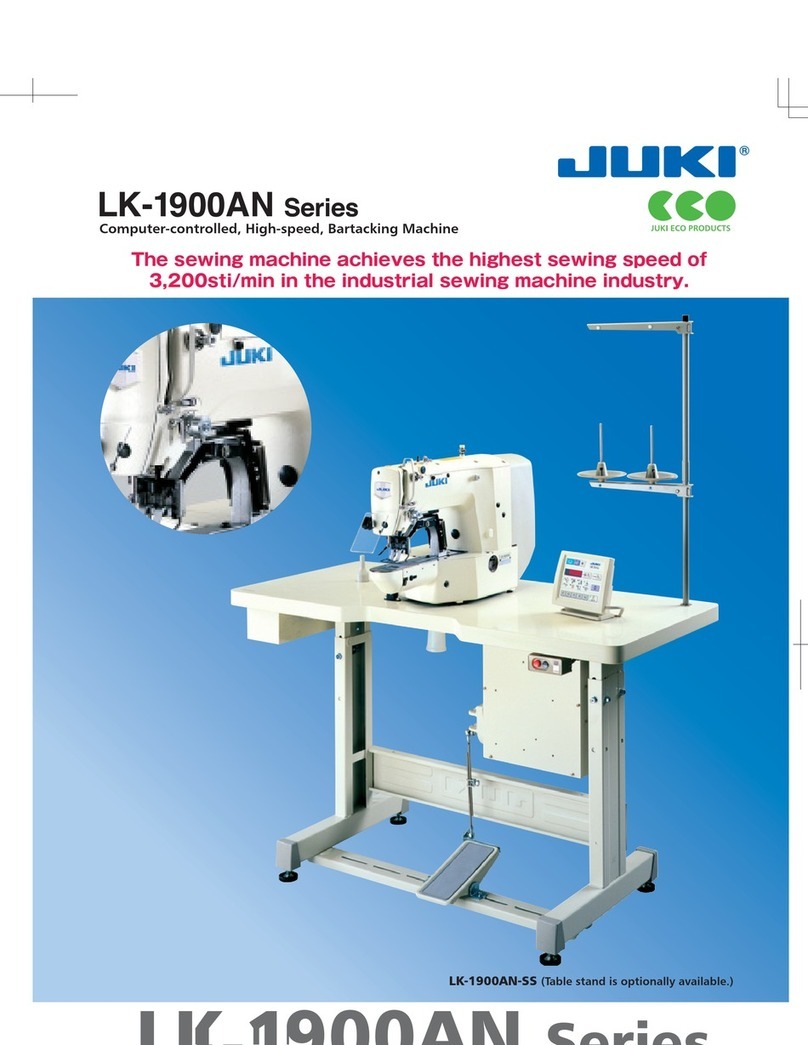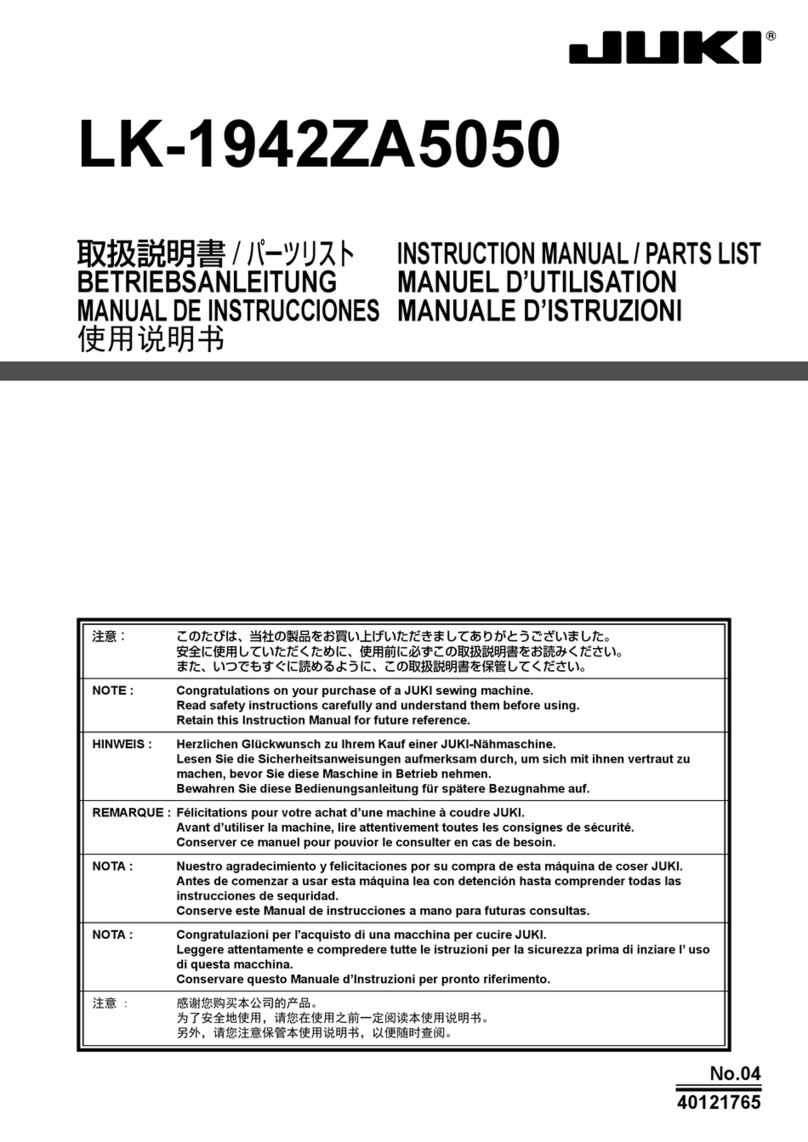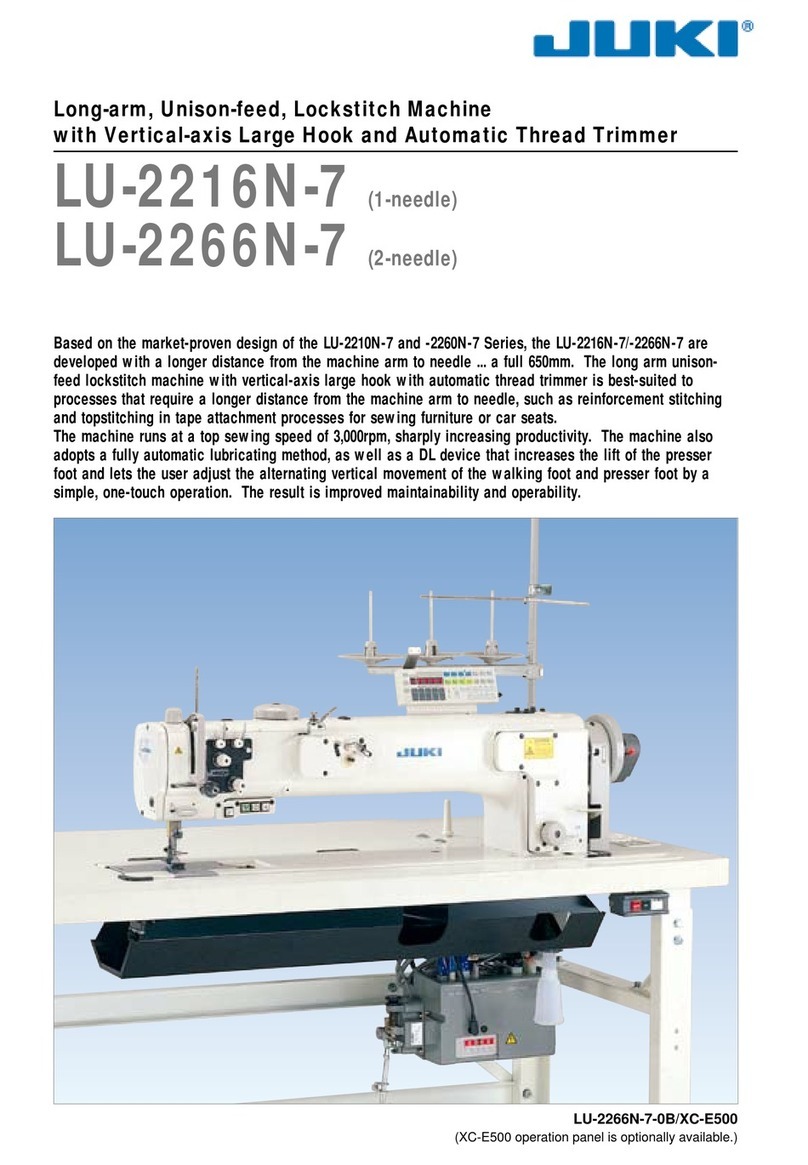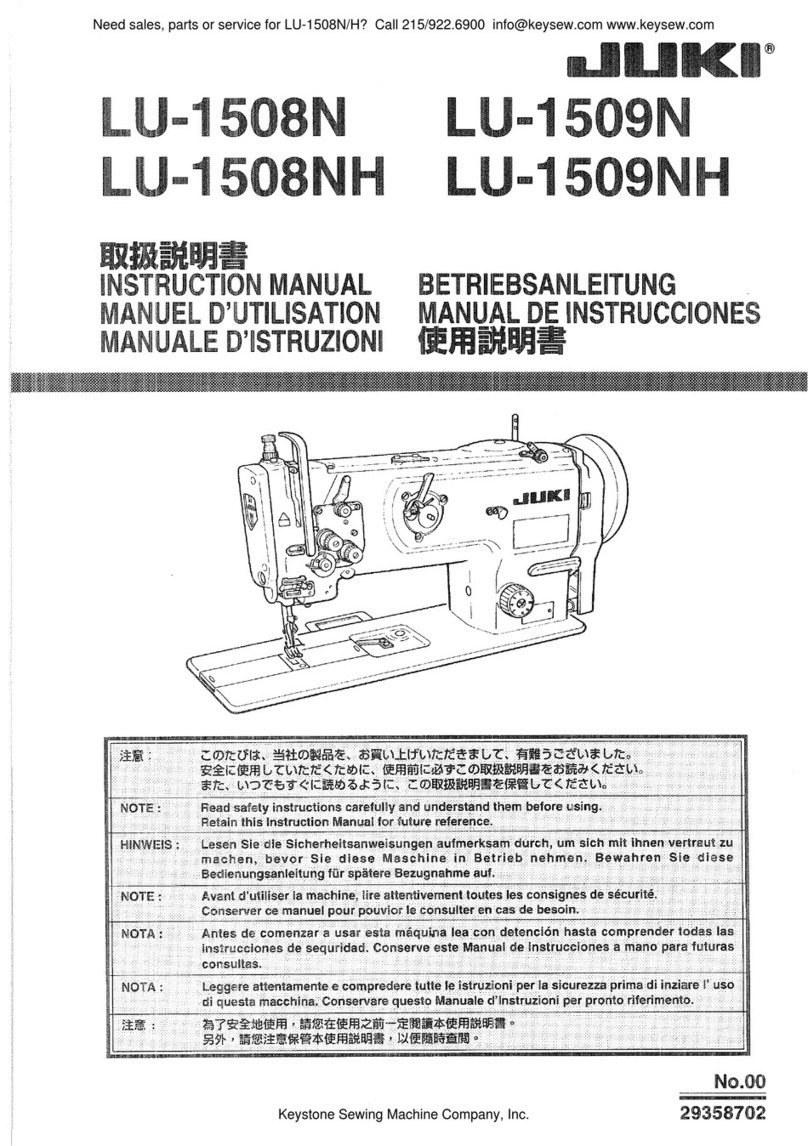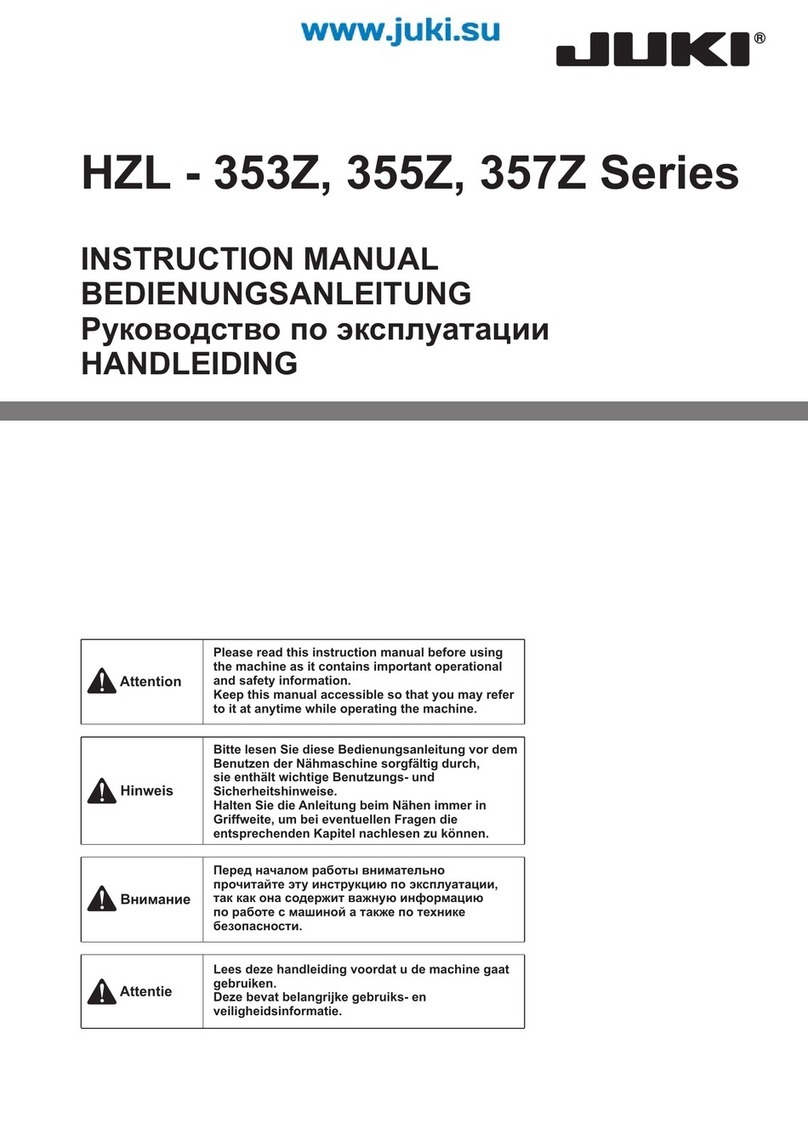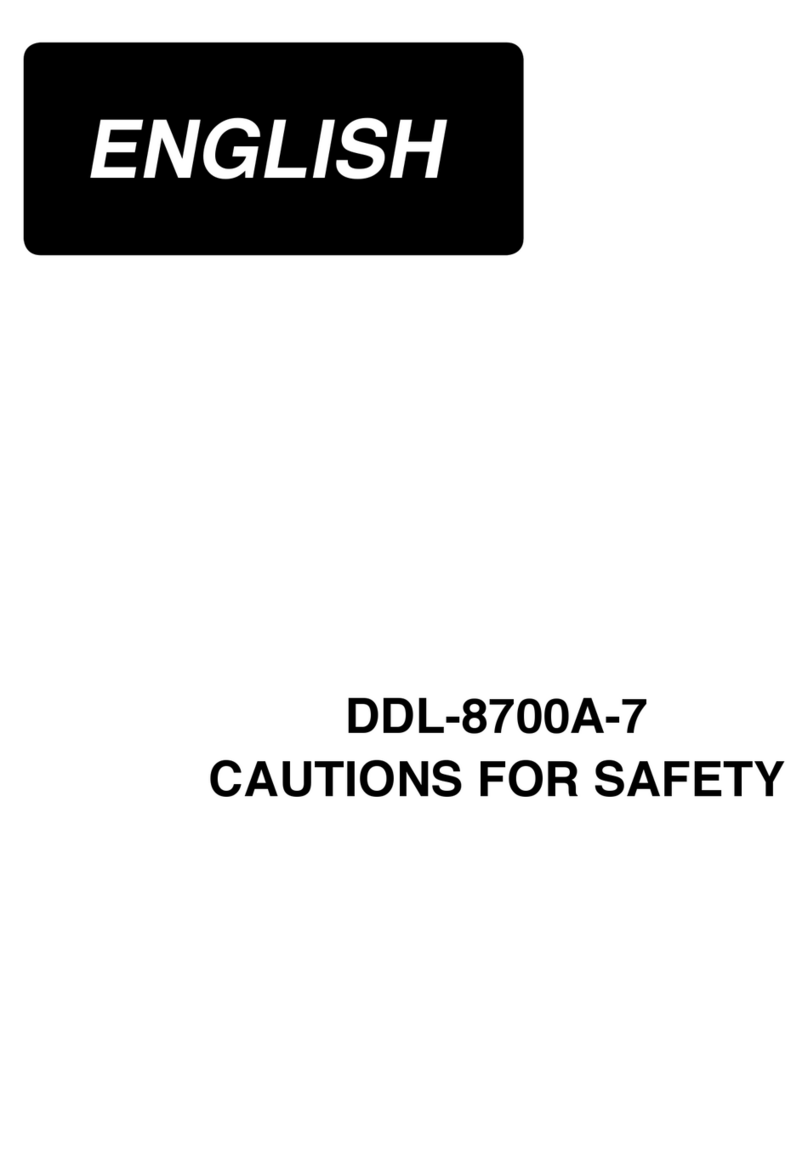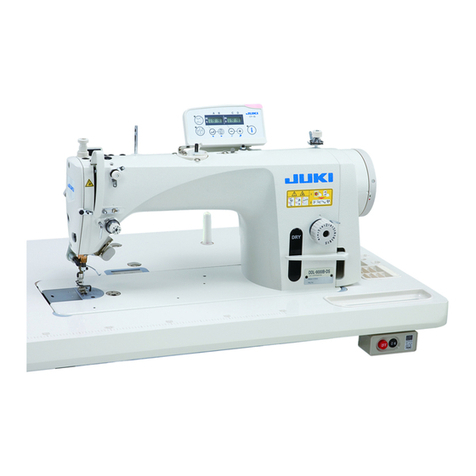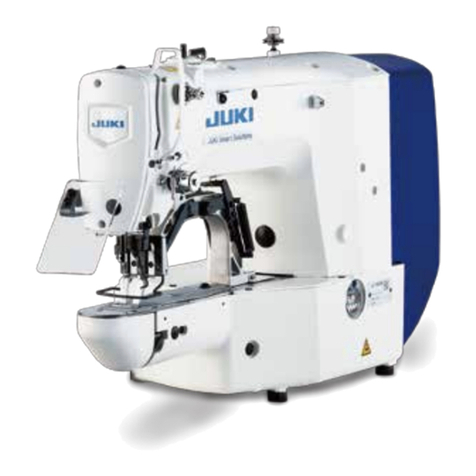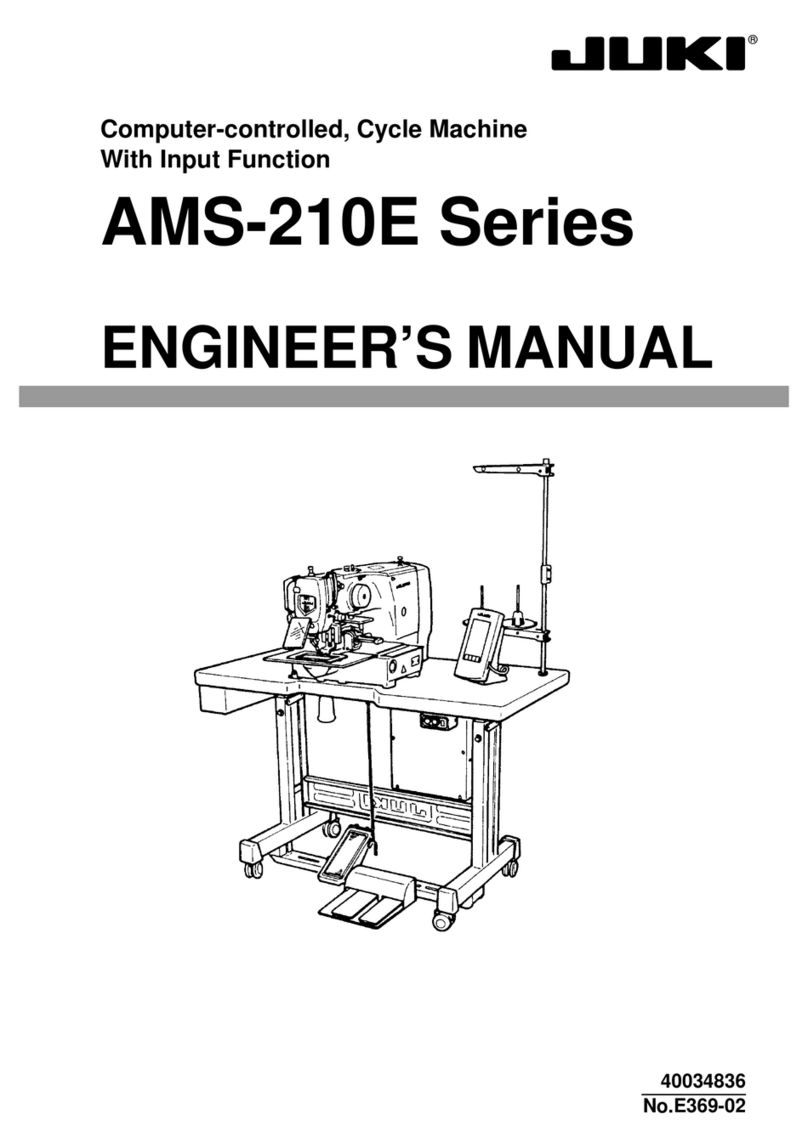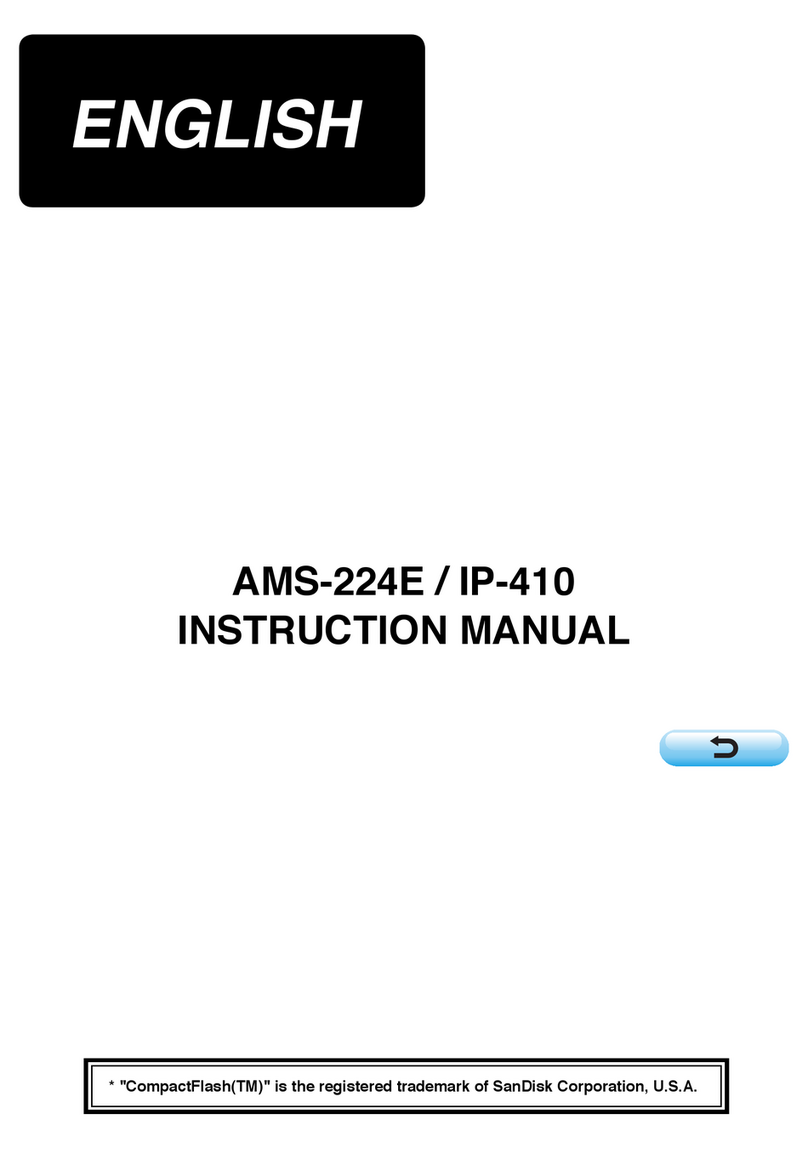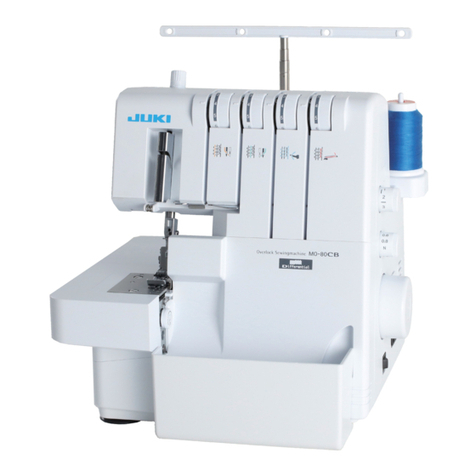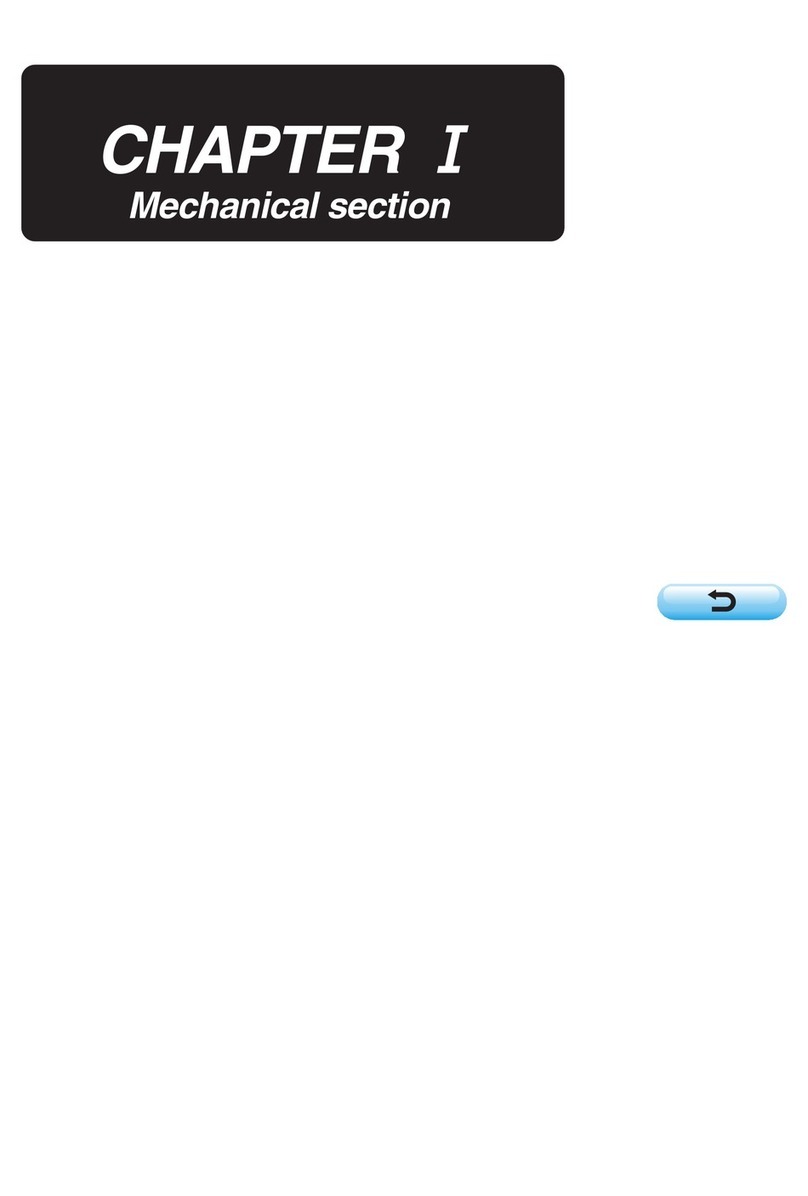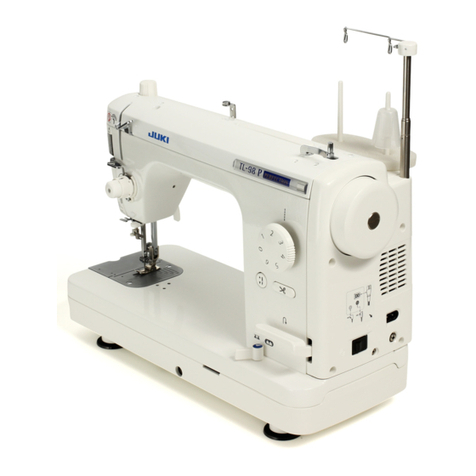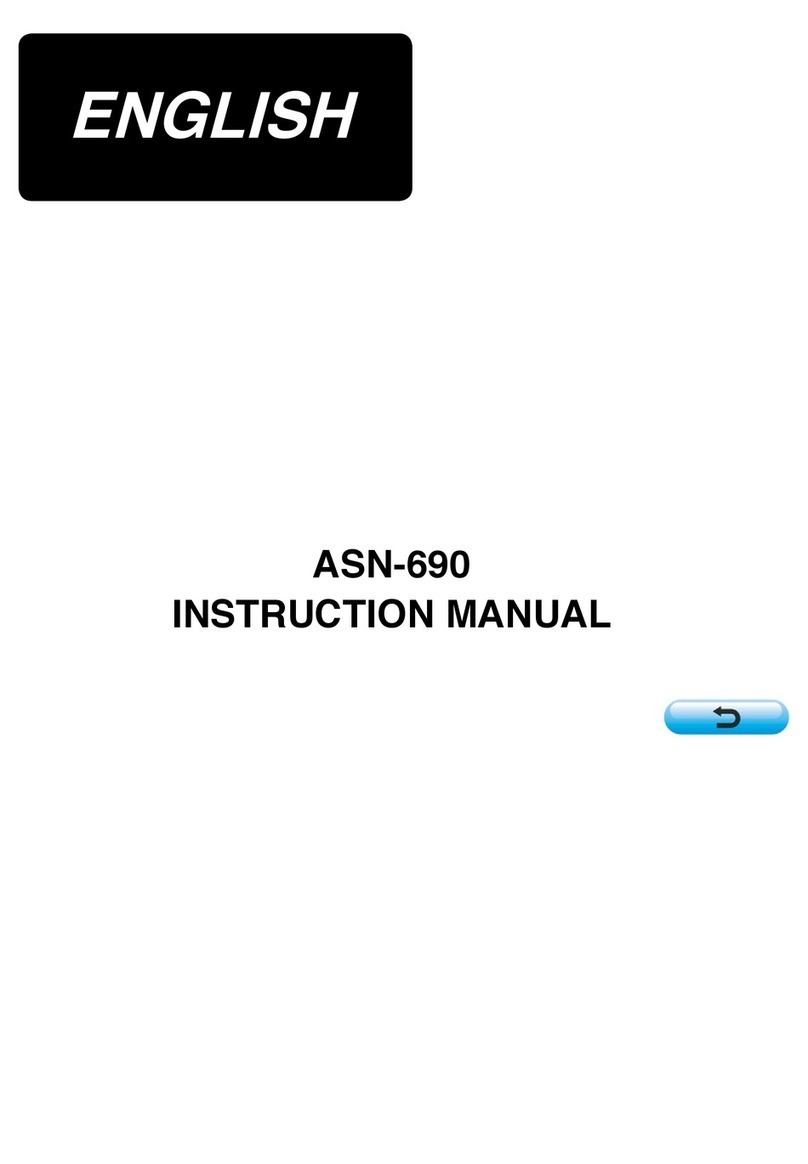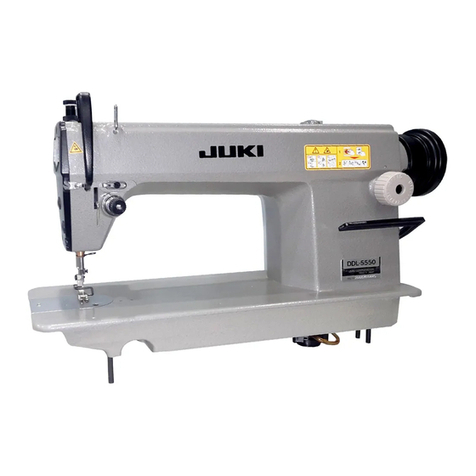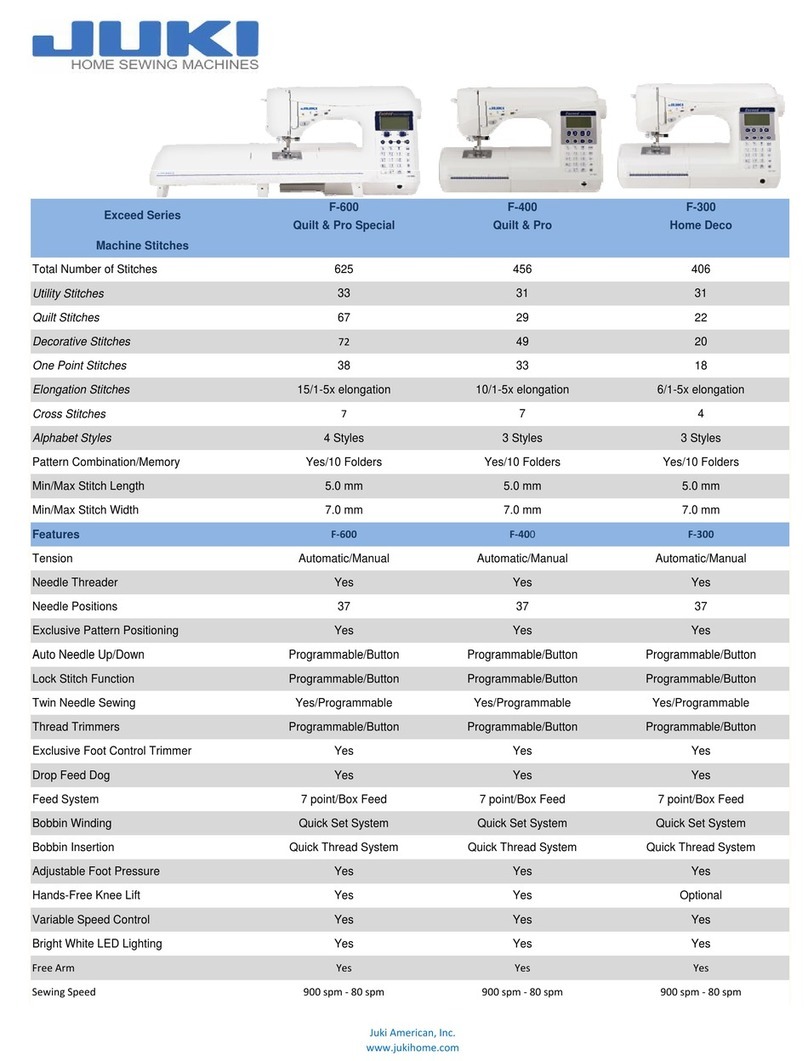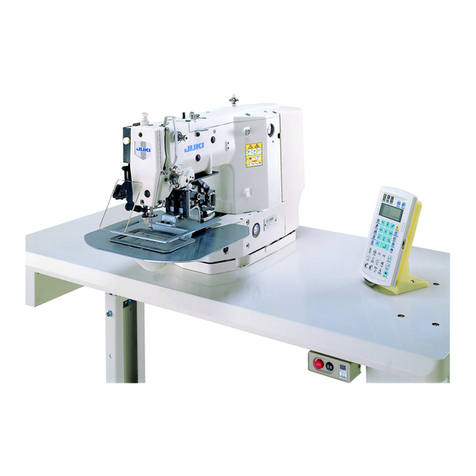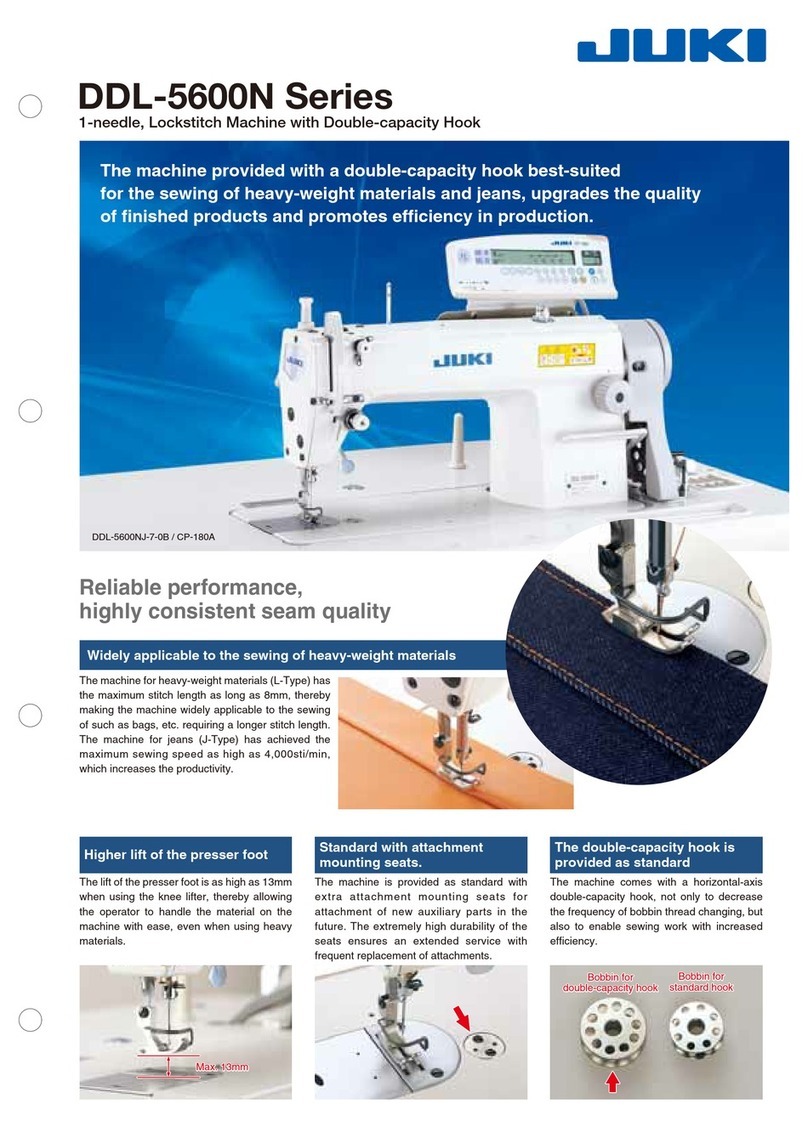
– 1 –
1. SPECIFICATIONS
I. MECHANICAL SECTION
(WITH REGARD TO THE SEWING MACHINE)
1 Sewing area X (lateral) direction Y (longitudinal) direction
AMS-221F-2516 : 250 mm × 160 mm
AMS-221F-3020 : 300 mm × 200 mm
2 Max. sewing speed 2,800 sti/min (When sewing pitch is 3.5 mm or less), 2500 sti/min (G type)
3 Stitch length 0.1 to 12.7 mm (Min. resolution : 0.05 mm)
4 Feed motion of feeding
frame
Intermittent feed (2-shaft drive by stepping motor)
5 Needle bar stroke 45.7 mm
6 Needle GROZ-BECKERT 134, 135×17, ORGAN needle DP×5, DP×17
7 Lift of feeding frame Max. 30mm
8
Intermediate presser stroke
4 mm (Standard) (0 to 10 mm)
9
Lift of intermediate presser
25 mm
10
Intermediate presser
DOWN position variable
Standard 0 to 3.5 mm (Max. 0 to 7.0 mm)
11 Shuttle Double-capacity semi-rotary hook
12 Lubricating oil New Defrix Oil No. 2 (Supplied by oiler)
13 Memory of pattern data Main body, Media
• Main body : Max. 999 patterns (Max. 50,000 stitches/pattern)
• Media : Max. 999 patterns (Max. 50,000 stitches/pattern)
14 Temporary stop facility Used to stop machine operation during a stitching cycle.
15 Enlarging / Reducing
facility
Allows a pattern to be enlarged or reduced on the X axis and Y axis independently
when sewing a pattern. Scale : 1% to 400% times (0.1% steps)
16 Enlarging / Reducing
method
Pattern enlargement / reduction can be done by increasing / decreasing either stitch
length or the number of stitches. (Increasing/decreasing stitch length only can be
performed when pattern button is selected.)
17 Max. sewing speed
limitation
200 to 2,800 sti/min (Scale : 100 sti/min steps)
18 Pattern selection facility Pattern No. / Pattern name selection method
(Main body : 1 to 999, Media : 1 to 999)
19 Bobbin thread counter UP/DOWN method (0 to 9,999)
20 Sewing counter UP/DOWN method (0 to 9,999)
21 Memory back-up In case of a power interruption, the pattern being used will automatically be stored in
memory.
22 2nd origin setting facility Using jog keys, a 2nd origin (needle position after a sewing cycle) can be set in the
desired position within the sewing area. The set 2nd origin is also stored in memory.
23 Sewing machine motor Servo-motor
24 Dimensions
AMS-221F-2516 : 1,200mm (W) × 1,000mm (L) × 1,200mm (H) (Excluding thread stand)
AMS-221F-3020 : 1,200mm (W) × 1,070mm (L) × 1,200mm (H) (Excluding thread stand)
25 Mass (gross mass) AMS-221F-2516 : 238 kg
AMS-221F-3020 : 247 kg
26 Power consumption 400 VA
27 Operating temperature
range
5˚C to 35˚C
28
Operating humidity range
35 % to 85 % (No dew condensation)
29 Line voltage Rated voltage ±10% 50 / 60 Hz
30 Air pressure used AMS-221F-2516 : 0.5 to 0.55 MPa (Max. 0.55 MPa)
AMS-221F-3020 : 0.35 to 0.4 MPa (Max. 0.55 MPa)
31 Air consumption 2.75 dm3/ min (ANR)
32 Needle highest position
stop facility
After the completion of sewing, the needle can be brought up to its highest position.
33 Noise - Equivalent continuous emission sound pressure level (LpA) at the workstation:
A-weighted value of 82 dB; (Includes KpA = 2.5 dB); according to ISO 10821- C.6.3
-ISO 11204 GR2 at 2,800 sti/min.
- Sound power level (LWA );
A-weighted value of 91.5 dB; (Includes KWA = 2.5 dB); according to ISO 10821- C.6.3
-ISO 3744 GR2 at 2,800 sti/min
Time required for sewing: 2.2 sec, using Pattern No. 102
